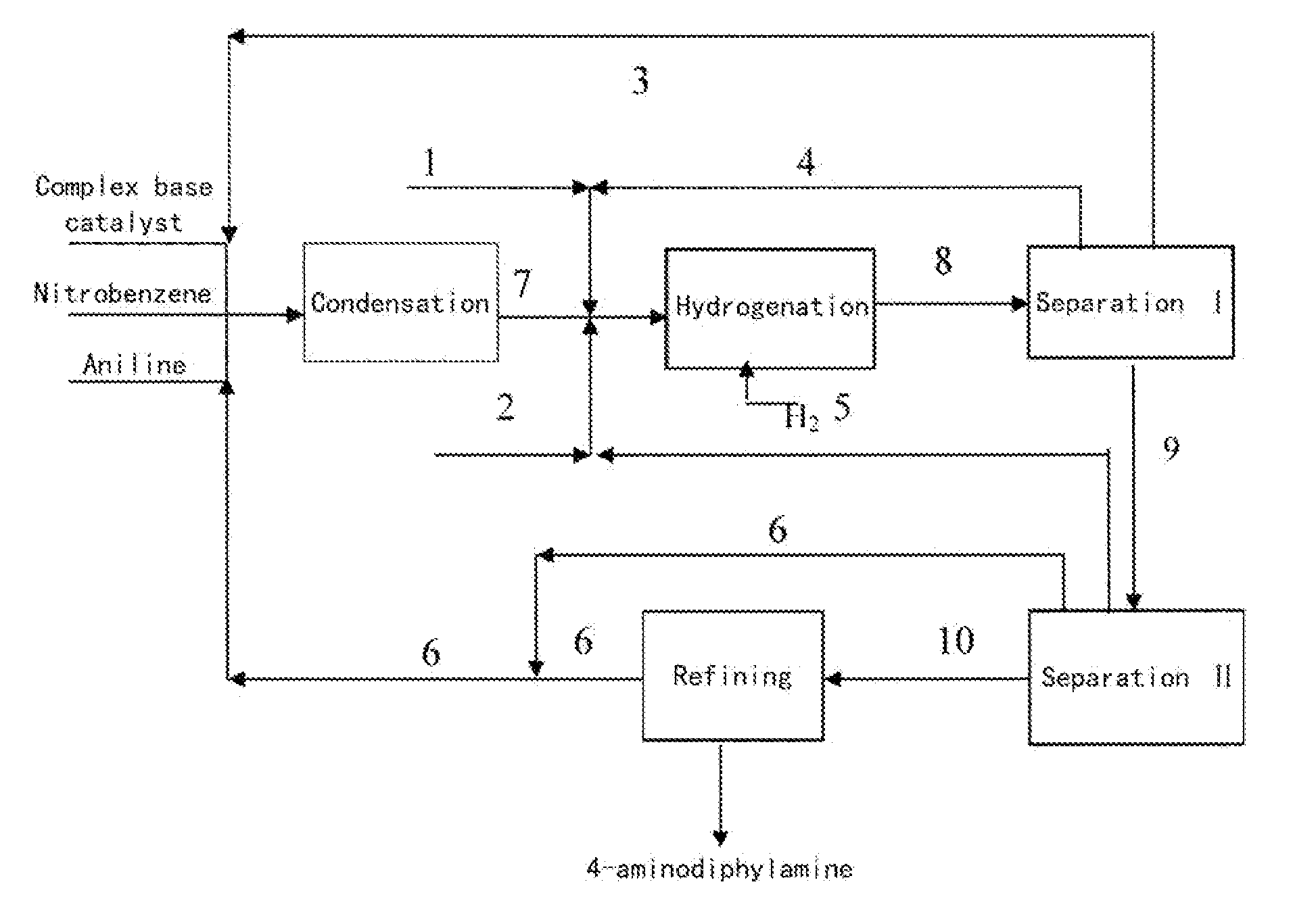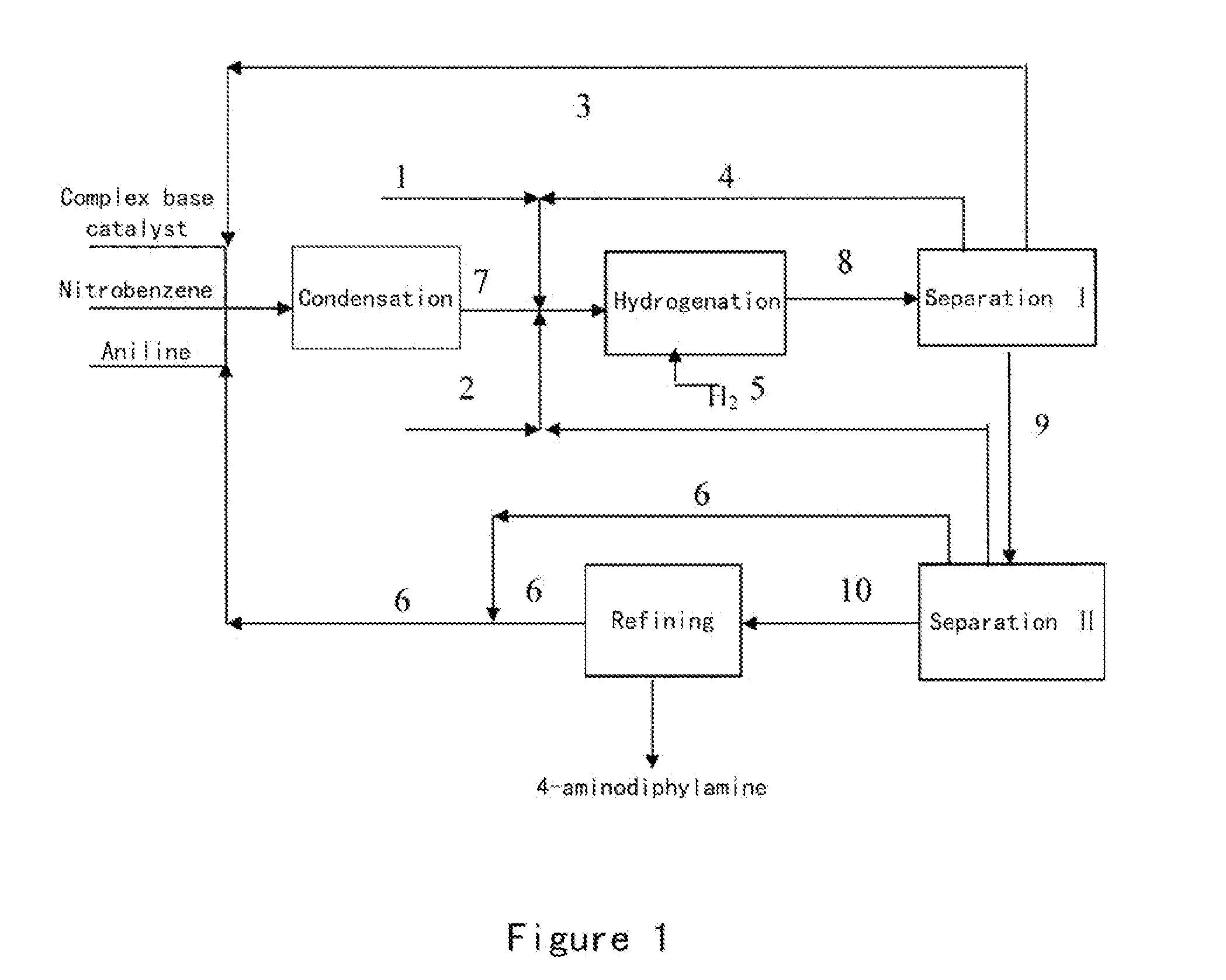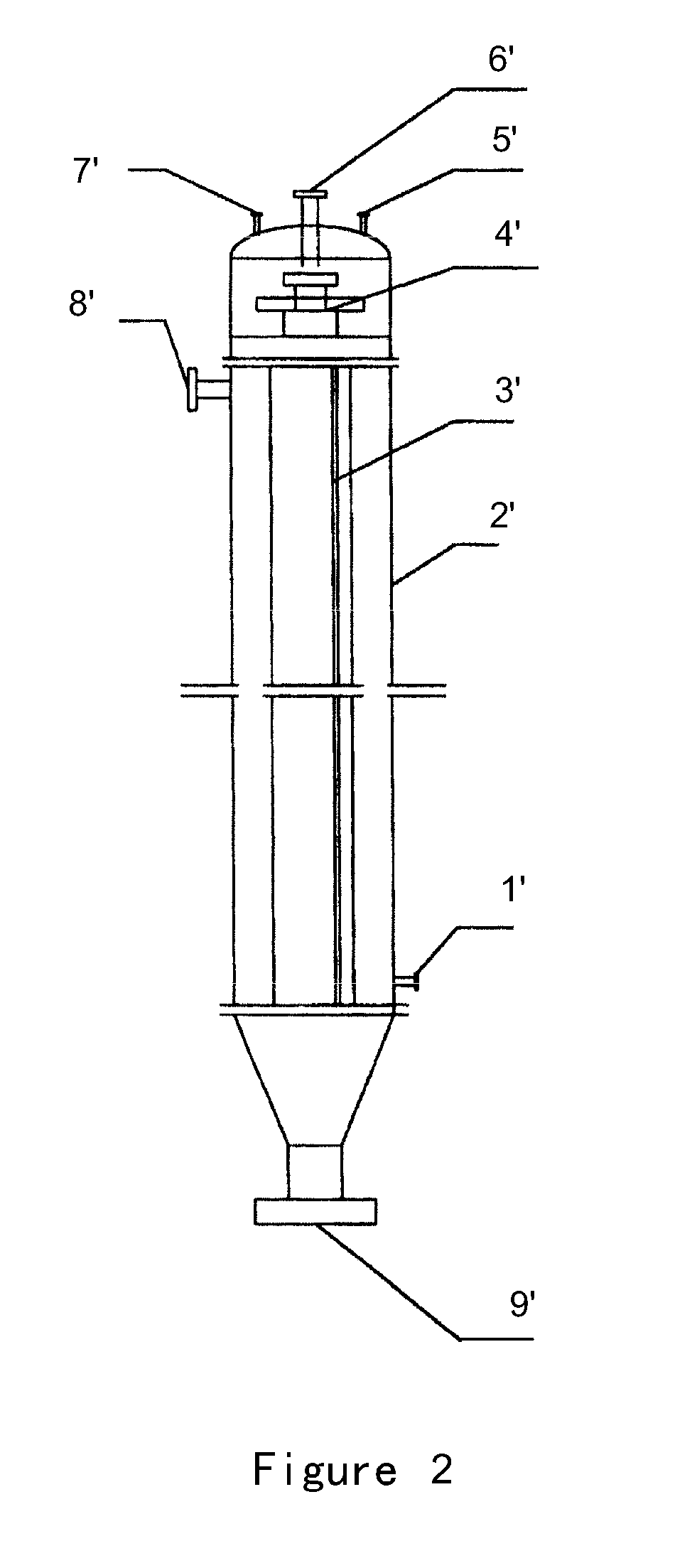Process for preparing 4-aminodiphenylamine
a technology of aminodiphenylamine and aminodiphenylamine, which is applied in the field of process for preparing 4aminodiphenylamine, can solve the problems of high energy consumption, complex operation, and severe reaction conditions, and achieve the effects of reducing the dehydration efficiency, reducing the yield, and reducing the water content of the reaction mixture at the end of the reaction
- Summary
- Abstract
- Description
- Claims
- Application Information
AI Technical Summary
Benefits of technology
Problems solved by technology
Method used
Image
Examples
example 1
Preparation of a Complex Base Catalyst
[0098]To a 1000 ml three-necked flask equipped with a condenser and a stirrer were added 227.5 g of 20 wt.-% aqueous solution of tetramethyl ammonium hydroxide (0.5 mol), 10 g (0.25 mol) of sodium hydroxide and 346 g of 30 wt.-% aqueous solution of tetramethyl ammonium carbonate (0.5 mol). The mixture was homogeneously stirred at 72-77° C. to give a complex base catalyst having a concentration of 27.3 wt.-%.
example 2
Preparation of a Powdery Composite Catalyst
[0099]46 g of powdery nickel, 51 g of powdery aluminum, and 3 g of powdery iron were taken and mixed, then molten into alloy state in an induction furnace. The molten alloy was ejected using gas pressure through a nozzle to a copper drum rotating at high speed to be quenched quickly with cooling speed being as high as 105-106K / sec. The cooled alloy was pulverized using a ball mill, and 99.7 g of powder of from 40 to 300 mesh were obtained by sieving. 375 g of 20 wt.-% sodium hydroxide aqueous solution was charged into a 500 ml three-necked flask equipped with a thermometer and a stirrer, and the above powder is slowly added thereto. The mixture was stirred at 60° C. for 4 h, then the solid was washed with deionized water until neutral to give a powdery composite catalyst.
example 3
[0100]Under vacuum condition, feeding pumps of the above complex base catalyst, aniline and nitrobenzene were simultaneously switched on and adjusted to such flow rate as aniline 150 kg / h, nitrobenzene 30 kg / h and the complex base catalyst 200 kg / h. The aniline, nitrobenzene and complex base catalyst were continuously fed into a falling film reactor to be heated and allowed to condense. Condensation liquid in the falling film reactor was discharged from the bottom into a first reactor to proceed with condensing. Part of condensation liquid from the bottom of the first reactor was conveyed back to the falling film reactor via a circulating pump, forming a local circulating system. Ethanol vapor at 78-90° C. was used as the heat medium of the falling film reactor. Reaction temperature was controlled as 75° C., pressure was controlled as 0.008 MPa (absolute pressure) and flow rate of the circulating liquid was controlled as 1 m3 / h. The reactants overflowed from the first reactor into a...
PUM
| Property | Measurement | Unit |
|---|---|---|
| temperature | aaaaa | aaaaa |
| temperature | aaaaa | aaaaa |
| temperature | aaaaa | aaaaa |
Abstract
Description
Claims
Application Information
 Login to View More
Login to View More - R&D
- Intellectual Property
- Life Sciences
- Materials
- Tech Scout
- Unparalleled Data Quality
- Higher Quality Content
- 60% Fewer Hallucinations
Browse by: Latest US Patents, China's latest patents, Technical Efficacy Thesaurus, Application Domain, Technology Topic, Popular Technical Reports.
© 2025 PatSnap. All rights reserved.Legal|Privacy policy|Modern Slavery Act Transparency Statement|Sitemap|About US| Contact US: help@patsnap.com



